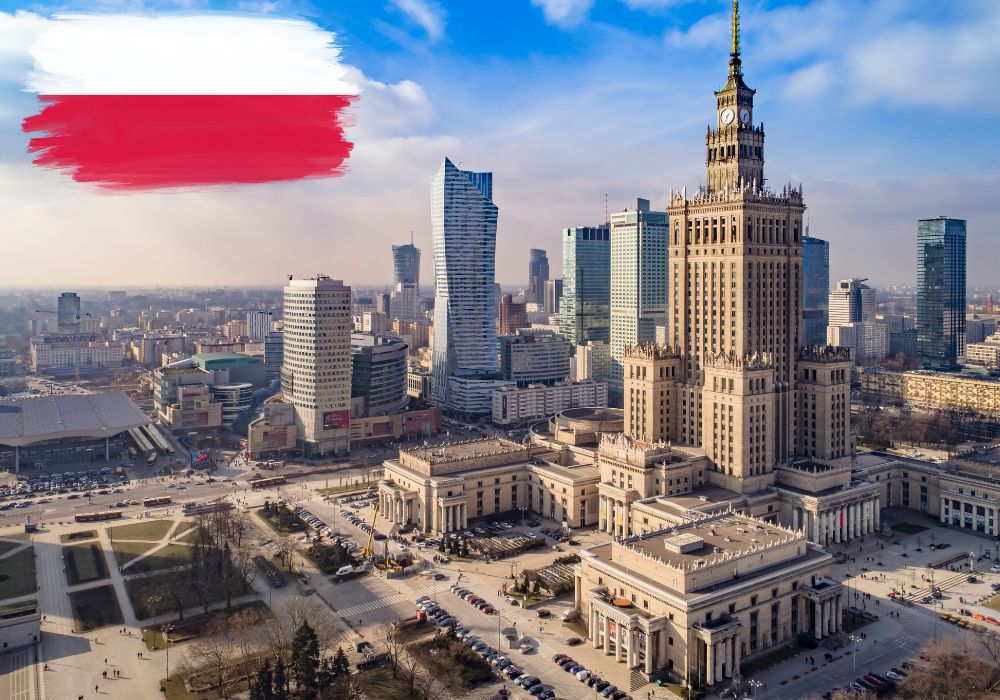
September 18, 2025 — The Warsaw Stock Exchange (WSE) has officially launched Poland’s first Bitcoin exchange-traded fund (ETF), marking a major milestone for crypto adoption in Eastern Europe. This regulated financial product gives Polish investors exposure to Bitcoin through traditional brokerage accounts without needing direct crypto custody.
What We Know
- The ETF listing on WSE is Poland’s first regulated Bitcoin ETF.
- It allows local investors to gain exposure to Bitcoin through standard securities brokerage channels. No need to touch a wallet, deal with private keys, or manage crypto custody themselves.
- Some versions of the ETF include FX hedging, aimed at shielding Polish investors from exchange rate fluctuations between the Polish złoty (PLN) and the U.S. dollar (USD).
- The move is part of a wider global trend: Canada introduced similar Bitcoin ETFs in 2021; the U.S. followed with approvals in 2024. Poland joining in now signals continued momentum across regions.
Why The Polish ETF Matters
From a crypto business / investment development viewpoint, a few things stand out:
1. Institutional & Retail Bridges
This ETF is a bridge for many Polish investors who want Bitcoin exposure but are uneasy or unfamiliar with crypto exchanges, wallets, or custody. Having a regulated product in a familiar securities context lowers the barrier. It expands demand. More participants can enter the BTC market this way.
2. Regulatory Legitimacy & Trust
An ETF on the Warsaw Stock Exchange means oversight by financial regulators, compliance with securities laws, all adding layers of trust. For projects, exchanges, service providers, this is good news: fewer worries about regulatory backlash. Plus, it signals that national authorities see value in regulated crypto investment products.
3. FX Hedging Is a Smart Move
Including hedging against PLN-USD flipside exposes “crypto risk + currency risk.” Hedging helps reduce worry for local investors who’d otherwise fear the złoty weakening or exchange volatility messing up their returns. Smart design. This may make the product more attractive to conservative or risk-aware investors.
4. Market Depth and Liquidity Effects
As more people access Bitcoin through ETFs rather than direct purchase, we may see incremental demand for BTC. Over time, this could raise Bitcoin’s visibility, push liquidity upward. Might spur more crypto ETF launches across Eastern Europe and beyond.
What Challenges to Watch
However, from our perspective, it’s not sugar-coated. A few risks and friction points are real:
- Tracking vs Actual Ownership: Because ETF investors don’t hold Bitcoin directly, there’s always a risk that the price tracking via derivatives or futures isn’t perfect. Premiums, fees, or spreads might eat into returns.
- Regulatory Risk Still Exists: While this ETF is regulated, crypto regulation remains in flux. Poland and EU regulations could tighten, costs of compliance might rise.
- Volatility + Public Expectation: Many will expect big returns, but volatility in Bitcoin remains. If expectations are mismatched, there could be backlash. Markets might react with sharp swings initially.
- Competition & Fees: If competing financial products emerge (other ETFs, ETPs, or even crypto brokers), those with lower fees or better features may capture more market share. The success of this ETF will depend on pricing, ease of access, marketing, and investor education.
What It Means for Crypto Players
From a strategy and business development perspective, several implications and opportunities:
- New Market Opportunity: Poland (and Eastern Europe) becomes more fertile. Crypto platforms, custodians, wallet providers, exchanges can look there for partnerships, user acquisition, educational content, wallet integration.
- ETF / Product Design Insights: Observing how Warsaw designs this ETF (hedging, regulatory structure, fee model) can inform how Hotcoin or similar platforms might launch products, whether ETF-like, tokenized securities, or other regulated exposure paths.
- Integration & Asset Listing: Tokens or crypto assets that align with regulatory comfort may be more in demand. Bitcoin first, but likely next will be Ethereum, stablecoins, or other assets if the trend continues.
- Marketing & Trust: Being able to point to regulated financial products improves credibility for platforms. Hotcoin can leverage this development in communication to users, showing that crypto is increasingly backed by mainstream finance.
The launch of Poland’s first Bitcoin ETF on the Warsaw Stock Exchange is a landmark moment, not just for Poland, but for Eastern Europe and the global trajectory of regulated crypto investment. For investors, it opens a new channel. For the industry, it adds legitimacy, pressure to innovate, and signals that demand for regulated crypto exposure is rising. If you’re in crypto trading, product design or asset listing, this is something to watch closely. ETF demand may grow, regulatory clarity may improve, and markets will likely shift accordingly.
At Hotcoin, we’ll continue watching these developments, exploring how to align with global ETF trends, and providing you with access, tools, and insights to make the most of this evolving landscape.
Stay tuned, things are heating up.
Hotcoin Official Site: https://www.hotcoin.com
Hotcoin Twitter: https://x.com/HotcoinGlobal
Hotcoin Telegram: https://t.me/HotcoinEX
Hotcoin Chinese Twitter: https://x.com/hotcoinzh
Hotcoin Chinese Community: https://t.me/hotcoinglobalcn
Hotcoin YouTube: https://www.youtube.com/@hotcoinglobal
